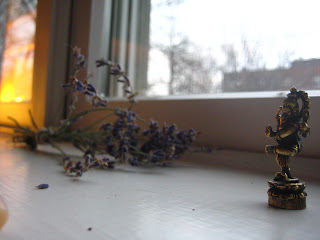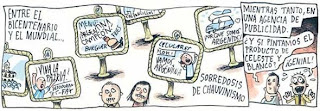
Back in February, on the farm, I met Jose, the Ecuadorian boyfriend of a fellow volunteer, who was volunteering for the month at the farm next door. Soon after she arrived, she offered the rest of us some chocolate, which was an amazing treat, and then told us that Jose’s grandparents had made it from their own cacao fruit, and I was completely in love. After meeting Jose and talking to him a little more about this delicious family business, I asked if I could go and visit. He enthusiastically agreed, and Ecuador was officially added to my itinerary.
The first week and a half in Ecuador were spectacular. Though I’d been to the country twice before, I had seen very little of it, and this time, I was absolutely taken in by all of it: by the green, patchwork rolling hills of the sierras, the misty, fog-shrouded windy mountain roads, the Quichua-speaking, chestnut-skinned Indians of the highlands with their peacock-feathered porkpie hats, and the country’s fondness for my favorite flavor combo: red onion, tomato, cilantro, lime juice, and salt.
Making my way up the center of the country from the south, I was headed to Quito to head off for a tour of the rainforest in the northeast for a few days, after which I planned to try to meet up with Jose’s family and visit their cacao plantation. In typical Sarah fashion, I was really just making it up as I went along, so when I arrived in Quito on a Sunday, I was ready to leave on my jungle tour the following day, and hadn't been in touch with Jose's family at all yet. Having not had an internet connection for the past several days, I was surprised to find in my inbox an email Jose had sent that day, saying that his grandparents, brother and sister were heading to the cacao plantation on the coast the very next morning, and it would be great if I could go with them.
Serendipity. I immediately changed the date for my jungle tour, called Jose's brother Juancho and made arrangements to have them pick me up the next morning and head for the coast. It was a somewhat frenzied hour or so of plan-changing and plan-making, and only afterward did I have a chance to think, with a stomach-butterfly of apprehension, that I was about to tag along on the family vacation of complete strangers, and hope that we all hit it off!
I need not have been worried. Grandpa and Grandma, Pepo and Lili, treated me like one of their own
nietas, or grandchildren. Jose's sister Vale was about the most mature fifteen year-old I’ve met; she and I chatted throughout the eight hour drive to the coast. 20 year-old Juancho, his friend Kika, Vale and I spent countless hours that week laughing and storytelling.

The places we visited that week were like settings from a Gabriel Garcia Marquez novel. Sade, the tiny, remote jungle town where the family had a cabin and a cacao and palm plantation, was our first destination. After an eight hour drive north from Quito, taking us across the equator, through mist-shrouded highlands and countless one road tropical villages, their inhabitants gathered around open-air pool tables. Barefooted girls sold tube-like plastic bags of mandarines and juicing oranges to passing motorists. Finally we turned off the paved highway and drove a bumpy hour on a rutted muddy road, which took us past ramshackle cabins on stilts and soldier-like rows of oil palms. A tiny ferry carried us and our loaded down 4x4 pickup truck across a slow brown river, and a nausea-inducing hour later, we arrived at the family's neat little cabin.
The next morning after breakfast, the “kids,” Vicente, and Pepo set off for the hour and a half hike to the cacao plantation. We had stopped on the way to buy me some rubber boots, and within fifteen minutes of walking, I could see why they were the footwear of choice in these parts. We slogged uphill through slippery red mud, pausing occasionally to examine highways of leafcutter ants, giant, iridescent bugs, and tiny frogs, until finally we reached the cabin of the plantation manager at the base of the cacao fields. Vicente led us further uphill, past a stream and through a grove of short, big-leaved trees, their branches dripping with what looked like giant, wine-colored ears of corn, the cacao fruit. He used his machete to remove the thick outer skin, and we passed around the oblong fruit, sucking the juice from the tart, soft, white-skinned flesh around each seed. I never would have guessed that this could be turned into the rich chocolate bar I’d tasted at the farm back in February!


That evening, after hosing down our muddy boots and showering, I went with Pepo and Lilia quarter mile up the road to the school they had helped to build for the local children. Working with a Jesuit organization called Fe y Alegria (Faith and Happiness), Pepo had helped organize the creation of a boarding school for the forty or so students who previously had been walking up to two hours each way for school. Night was falling, and children of all ages played outside on the soccer field, and inside a brightly lit multi-purpose room. On our way home, the young school director and his smiling wife stopped their motorbike to catch up with Pepo, whom everyone in the village greeted as “Ingeniero” or “Engineer.” It was clear from these interactions that “Ingeniero” was a well-loved member of the Sade community.
The following day, Wednesday, we loaded the pickup again and set off for Las Peñas, a beach town four hours away where Pepo and Lili owned a small hotel. On the way, we unexpectedly found ourselves behind a small town parade. Children dressed in traditional afro-Ecuadorian costumes, indigenous costumes, as well as clowns, cheerleaders, drag queens, and…buses. We never quite figured out the occasion for the festivities, but it made for a highly entertaining diversion.

The next few days were spent at Las Peñas, a beautiful coastal village lined with small, thatch-roofed restaurants and simple beachfront hotels. It was a picturesque spot, but despite the warm, sunny weather, we saw not a single tourist while we were there. A few years ago, a band of suspected Colombian paramilitaries had passed through, turning what had been a growing beach destination into the ghost town it is today. Pepo and Lili's small hotel was closed, but Jorge, the hotel caretaker, and his family, were living there and cooked delicious meals for us, including empanadas de verde (plantain), shrimp ceviche, and langostinas, the mini-lobsters that are the primary commodity for the locals, now that tourism has died.

We spent our days there swimming in the calm, shallow Pacific waters, playing hopscotch on the beach, and exploring the nearby coastal caves. On a walk down the road to one of the few functioning, but empty, hotels to use their swimming pool, we passed a small, half-built brick and cinderblock house, nearly hidden by vegetation. Lili told us that the owner had driven from Esmeraldas on the weekends to work on his dream, building by hand what would become a vacation cabin for his family. After six years of work, however, he abandoned the project suddenly, leaving it nearly completed. No one knew why.
The abandoned house was just one of countless characters that littered the balmy north coast. I imagined that he had discovered that his wife was having an affair, and, heartbroken, had given up the dream of a cottage by the beach. Or maybe he stopped coming after the tragic death of a child. That week, my imagination ran wild with stories inspired by this rich and exotic setting and its characters.
The family trip with the Merlos was a highlight of my year. I returned to Quito incredibly grateful to this generous family for letting a random gringa tag along and making her feel like one of the family. It confirmed my suspicion that the best way to travel is by connecting with local people, putting down the Lonely Planet, and taking advantage of unexpected opportunities. And it kindled new friendships that will surely endure far beyond borders and time zones.



















































